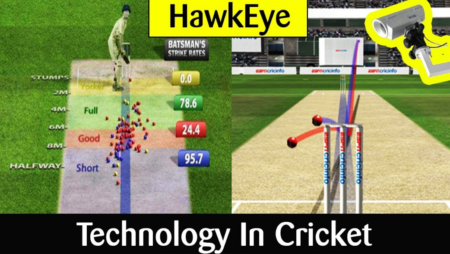

Hawkeye in cricket is a technological advance that is used as an aid for better decision-making. Hawkeye in cricket is a part of a Decision Review System (DRS) that the umpires or players can use when a leg before wicket call is questionable.
The Hawkeye system is employed after it is confirmed that the ball is legally delivered (not a no ball), and that there is no contact with the bat or any other part of the batter’s playing equipment. The screen then switches to a replay mode, where the trajectory of the ball is traced at where the ball is pitched, where the ball contacted the batter, and where the ball is expected to travel based on the parabola formed should it pass through the batter.
The first tracing that shows the pitching of the ball gives the third umpire a clue whether or not it was pitching in line of the stumps. If the ball does not pitch in line of the stumps, the trajectory stops there and the batter is immediately ruled not out. If the ball pitches in line of the stumps, it goes on to hit the batter’s pads. A parabola is then drawn that predicts whether the ball would go on to hit the stumps. If the parabola misses the stumps, the batter is deemed not out.
In some cases, the ball might hit the stumps, and yet the batter is deemed not out. This happens when more than 50% of the ball’s area is outside the stumps or bails that it hit. The decision is not out if the umpire has initially ruled the batter not out. However, if the umpire’s original decision was out, then that call is upheld.
The Hawkeye technology has refined the process of decision making in cricket and continues to be one of the hallmarks of sporting technology.




